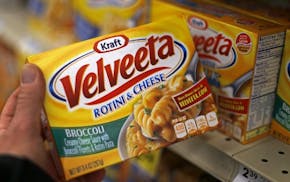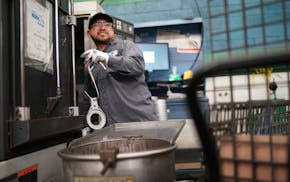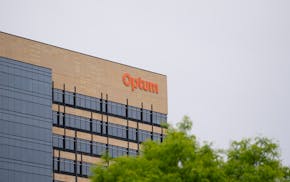When the Food and Drug Administration announced this week it would ban the artificial food coloring Red Dye No. 3, Winona-based Watkins wasted no time promoting its natural alternatives on social media.
"Red No. 3 is out, and natural is in!" said a company Instagram post on Wednesday. "Made from beet juice, turmeric and spirulina, Watkins food coloring has been the go-to natural, artificial dye-free choice for years."
That said, while most of the company's baking supplies are made without artificial ingredients, Watkins' neon-pink Barbie sprinkles use Red 3, the common name for the just-banned dye.
Decades after barring the petroleum-derived coloring from cosmetics, the FDA said it will now extend the Red 3 ban to food and medications because of cancer risks observed in rats.
From Betty Crocker sprinkles to watermelon Wiley Wallaby licorice, Minnesota food companies will have to live without the intensely red food coloring, though not for a few years. The FDA's ban on Red 3, also labeled as FD&C Red 3, does not take effect until 2027.
Watkins did not respond to a request for comment.
Perham-based KLN Brands, maker of Wiley Wallaby and other candy, was already working to meet California's Red 3 ban that also goes into effect in 2027.
"Both our regulatory and product development teams have been monitoring conversations around artificial colors for a number of years and have been diligently working toward compliance with California's, and now the FDA's, ruling," the company said in a statement. "All of our products will continue to adhere to regulatory requirements by the deadline established."
The dye is in Betty Crocker rainbow nonpareils sprinkles, which General Mills licenses. The Golden Valley-based company has also been planning to meet California's deadline to phase out Red 3.
"We will, of course, fully comply with this new requirement," said Mollie Wulff, a spokeswoman at General Mills. "Food safety is always our top priority, and our products will continue to adhere to all regulatory requirements."
General Mills previously tried to meet consumer demand for natural ingredients in 2015 when it stopped using artificial dyes in Trix and other cereals. But a backlash over the look and taste ended that experiment in 2017, when General Mills brought back the "classic" Trix.
Trix, like many foods with unnaturally vibrant red hues, uses Red 40, now the most widely used food coloring. Lakeville-based Post Consumer Brands also uses Red 40 in its Fruity Pebbles cereal and in its Malt-O-Meal bagged cereals.
Also a synthetic dye made from petroleum, Red 40 is of "moderate concern," per the Environmental Working Group, after studies have looked at nervous system impacts in children. The World Health Organization and FDA have said it does not pose a health risk.
California will ban Red 40 and five other common numbered dyes from food served in schools — including cereal, a lucrative market for General Mills — at the end of 2027.
While many foods have switched to Red 40 because of the increasing stigma around Red 3, hundreds of individual products still use the latter, largely candies (especially Valentine's Day varieties); baking supplies and baked goods; beverages; and some dairy products.
St. Paul-based Kemps uses Red 40 for artificial red coloring in ice cream, but it has used Red 3 in a limited-edition strawberry milk. Beyond national brands, store brands like those Target and other retailers carry might also contain Red 3 and will need reformulation.
The Center for Science in the Public Interest, which successfully petitioned the federal government to ban Red 3 and warns against all synthetic dyes, said "the cherry industry is the largest purveyor of Red 3-dyed products in the U.S. and in Europe" via maraschino cherries.
Red 3 is also found in cough medicine and lozenges, and medicine manufacturers have until 2028 to remove the dye from their formulas.
"The primary purpose of food dyes is to make candy, drinks and other processed foods more attractive," the center's president, Dr. Peter Lurie, said in a statement. "When the function is purely aesthetic, why accept any cancer risk?"

DOGE cuts federal money for upgrades at Velveeta plant in New Ulm

Minnesota factories strained by new steel tariffs and ensuing chaos
'We don't want to lose this mine': Fear sets in for Iron Range miners as shutdown takes hold

UnitedHealth sues the Guardian, alleging defamation in coverage of nursing home care

